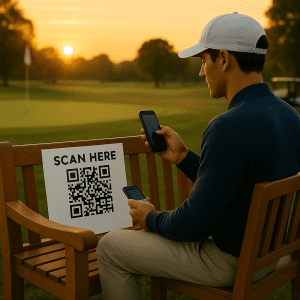Ball Pit Brand Activation Shouldn’t Leave Anyone Out
In the world of experiential marketing, few things spark instant joy like a ball pit brand activation. Whether it’s at a product launch, a music festival, or a pop-up event, ball pits evoke nostalgia, fun, and childlike wonder—making them an unforgettable canvas for brands to engage audiences.
But here’s the big question: Is your ball pit activation accessible to everyone?
While many campaigns celebrate play and sensory delight, too few are designed with inclusivity in mind. If your immersive brand activation with a play area unintentionally excludes people with mobility issues, neurodiverse traits, or sensory sensitivities, your brand could be missing out on both impact and equity.
In this blog, we’ll dive deep into what it takes to make your ball pit brand activation not just fun—but fully inclusive. We’ll explore design considerations, inclusive planning, and how to create a truly engaging brand experience with a ball pit for every kind of consumer.
Why Inclusion Matters in Ball Pit Brand Activations
Let’s be honest—experiential marketing is no longer just about being flashy or Instagrammable. It’s about being authentic, meaningful, and accessible. Today’s consumers expect brands to walk the talk on diversity, equity, and inclusion (DEI)—and that includes how experiences are designed.
A ball pit brand activation that excludes people—whether intentionally or not—can generate:
Negative press or social backlash
Lost engagement from underserved audiences
Misalignment with your brand’s values
On the flip side, inclusive experiential marketing with a ball pit delivers:
Deeper emotional connection
More diverse content creation
Word-of-mouth amplification
A welcoming brand perception
Common Accessibility Challenges in Ball Pit Experiences
Ball pits can be tricky. They’re physically immersive, often noisy, and designed around movement. This makes them a potential barrier for:
People with mobility limitations (e.g., wheelchair users, elderly attendees)
Neurodivergent individuals (e.g., people with autism or sensory processing disorders)
Parents with toddlers or strollers
Individuals with visual or hearing impairments
If your interactive ball pool experience doesn’t account for these groups, you risk alienating key segments of your audience.
Designing an Accessible Ball Pit Brand Activation: Key Principles
Let’s break down how to transform your fun zone brand activation into a welcoming, inclusive space—without losing its magic.
Create Accessible Entry and Exit Points
Most ball pits are built with steps or steep sides. For true accessibility, consider:
A ramp with proper incline for wheelchair users
A transfer platform that allows seated entry
Wide access pathways for caregivers or service animals
Ensure the entire playful brand engagement strategy includes ADA-compliant design standards.
Offer a Sensory-Friendly Zone
Ball pits can be overwhelming. The mix of lights, music, textures, and crowd noise can be overstimulating—especially for those with sensory sensitivities.
Designate a low-sensory session or quiet zone with:
Reduced sound and lighting
Smaller-scale ball pool promotional events
Sensory-friendly balls and tactile zones with different textures
Pro tip: Use color-coded signage to indicate intensity levels of each area.
Include Clear Signage and Instructions
Don’t assume all guests are familiar with how to navigate the space. Use inclusive design principles:
Pictograms and multi-language directions
Braille labels and large-print signs
Staff trained to assist all guests without assumptions
Even your experiential marketing with a ball pit benefits from clear communication—it enhances both safety and accessibility.
Incorporate Adaptive Play Options
Not everyone can physically jump into a ball pit—but everyone can play. Consider adding:
Overhead ball drop experiences
Interactive digital screens connected to the pit
Ball cannons, ramps, or pulleys for external interaction
This makes the interactive ball pool experience inclusive without changing its core appeal.
Train Your Brand Ambassadors
Your staff or event crew must be more than friendly—they must be trained in accessibility etiquette. They should know:
How to offer assistance without judgment
How to answer DEI-related questions
How to adapt activities for various needs
Remember, your ambassadors are the human extension of your ball pit brand activation.
Capture Inclusive Content Without Tokenizing
It’s great to show how inclusive your brand experience is—but do it authentically. Include people of all abilities and backgrounds in your event marketing content, but avoid performative messaging.
Let your inclusivity speak through experience—not just the post-event photos.
Case Study: An Inclusive Sensory Marketing with a Play Pit
At a wellness-themed brand pop-up in Chicago, a startup launched a sensory marketing with a play pit designed specifically with neurodivergent adults in mind. The pit featured:
Textured balls with different weights
A soft, dimly lit space with music-free sessions
A second-level viewing deck for attendees who didn’t want to enter the pit
Result?
33% higher engagement than the brand’s previous activations
Earned media from disability advocacy groups
Authentic user-generated content celebrating the event’s welcoming vibe
This proves that ball pit brand activation can be both playful and inclusive—without compromise.
Checklist: How to Make Your Ball Pit Brand Activation Inclusive
Here’s a quick checklist you can bring to your agency or experiential partner:
✅ ADA-compliant design with ramps or lifts
✅ Sensory-friendly options and quiet sessions
✅ Adaptive play tools (digital, tactile, remote)
✅ Inclusive signage (Braille, multilingual, icons)
✅ Staff trained in inclusive interaction
✅ Opportunities for all to participate—not just watch
✅ Authentic representation in visuals and messaging
Final Thoughts: Inclusive Ball Pit Brand Activations Are the Future of Experiential
If your brand believes in community, fun, and shared experiences, then your ball pit brand activation should reflect that for every audience.
Designing inclusively isn’t just good PR—it’s smart marketing. It creates longer dwell times, broader emotional connection, and deeper loyalty. It proves that your playful brand engagement strategy isn’t just about fun—it’s about belonging.
So the next time you plan a fun zone brand activation, don’t just think about how it looks. Think about how it feels—and who gets to feel it.






